"What we're seeing now in the industry is not unusual. A lot of capital has come in for companies that raised a lot of money at very high valuations at a time when general markets were really strong. The only challenge that most companies yet have to be is positive unit economics. However, that makes it extremely challenging when raising the next level of capital, especially when having raised money at high valuations. Now, new investors want to know how you're getting to profitability," says Adam Bergman, Global head of agtech investment banking at Citi Bank, during a panel at the Indoor AgTech.
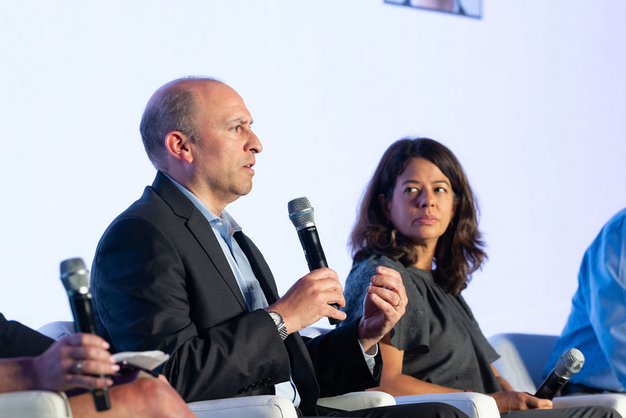
Adam Bergman (Photo credits: Indoor AgTech)
Hard assets cannot be built with equity
As Adam continues, he highly recommends that when companies aren't there already, they should come up with various ways of achieving those unit economics otherwise. "We're at a very tough market right now, and sadly if we fast-forward twelve months, I don't see the catalyst that's fundamentally going to change anything for most of the companies in this industry outside of getting towards profitability. It's going to be a lot of pain in this industry, but there are companies that are going to make it."
Looking at the tenets of what's going to drive success; a better and differentiated product, positive unit economics, and being able to find offtake. That is followed by a key component the industry must embrace: hard assets cannot be built with equity. According to Adam, the industry must figure out how to build the next layer of indoor farms using project finance, bank debt, and mezzanine. "Just anything that doesn't start with equity."
"There is going to be a clean-out of a lot of companies, which makes me really unhappy because a lot of them are my clients. However, that doesn't mean the sector is not going to be successful. We need to move away from the big money injections, scaling up and building as many plants and obtaining as much money as possible. I just don't think it's going to appeal to an investor. It's time to show off profitability," he adds.
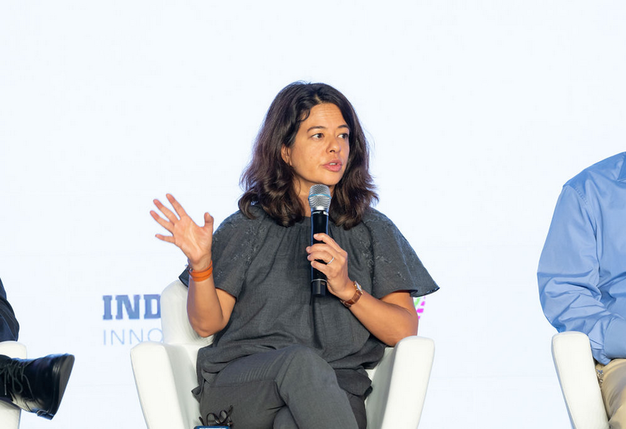
Maya Chorengel (Photo credits: Indoor AgTech)
Key attributes investors look for in a CEA business
"One of the positives we're seeing in the market is that retailers really want this product as they look for product- quality, reliability, and consistency," says Maya Chorengel, Co-managing partner at The Rise Fund as the panel went on.
Today, retailers are going to be more sensitive toward the financial position and the sense of whether their providers are an ongoing concern, Maya finds. "I think some of the retailers are going to be worried about who to partner with in this industry. However, if you can demonstrate financial strength and consistency, they will want to work with you."
When Maya and her team looked at the market a few years ago, they approached it very much from a fundamental basis. According to her, one of the challenges the market has faced is that a number of investors came in and saw technology only. However, they forgot that we were producing something that has a natural price in the price point.
"In the market, end consumers are eating at a certain price point and aren't willing to pay five times the price just because of interesting technology that caused it to grow. People are willing to pay the green premium within a certain brand." Following that, Maya continues to emphasize the fact that equity is costly now. However, equity is the highest cost of capital and as a gross equity investor, in order to generate more than a 20% return, the return on the farms built has to be more than 20% because there is corporate overhead on top of that.
"I think one of the key things that is going to drive investors thinking is the proof of unit economics and proof that companies can get to cash flow generative capabilities within the farm which will get them to a certain return," she adds. Maya explains that there are other pools of capital than equity that have a much lower return requirement. For instance, debt banking, infrastructure funds, and some fixed asset funds. Therefore it's very important for companies to know who their potential investor might be and knowing what their return profile is.
"In order to think about the capital structure you're putting together to blend that cost down, you need to have a product and farm that works at the price points that the market is willing to pay for a product."
The 2024 edition of the Indoor AgTech will be in New York, USA, on June 25 and 26. More details to be shared soon.
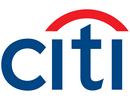 For more information:
For more information:
Adam Bergman, Global head of agtech investment banking
Citi Banking
www.citi.com
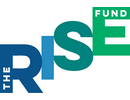 Maya Chorengel, Co-managing partner
Maya Chorengel, Co-managing partner
The Rise Fund
https://therisefund.com
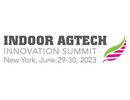 Indoor AgTech Innovation Summit
Indoor AgTech Innovation Summit
Tel.: +44 1273 789 989
info@rethinkevents.com
https://indooragtechnyc.com
